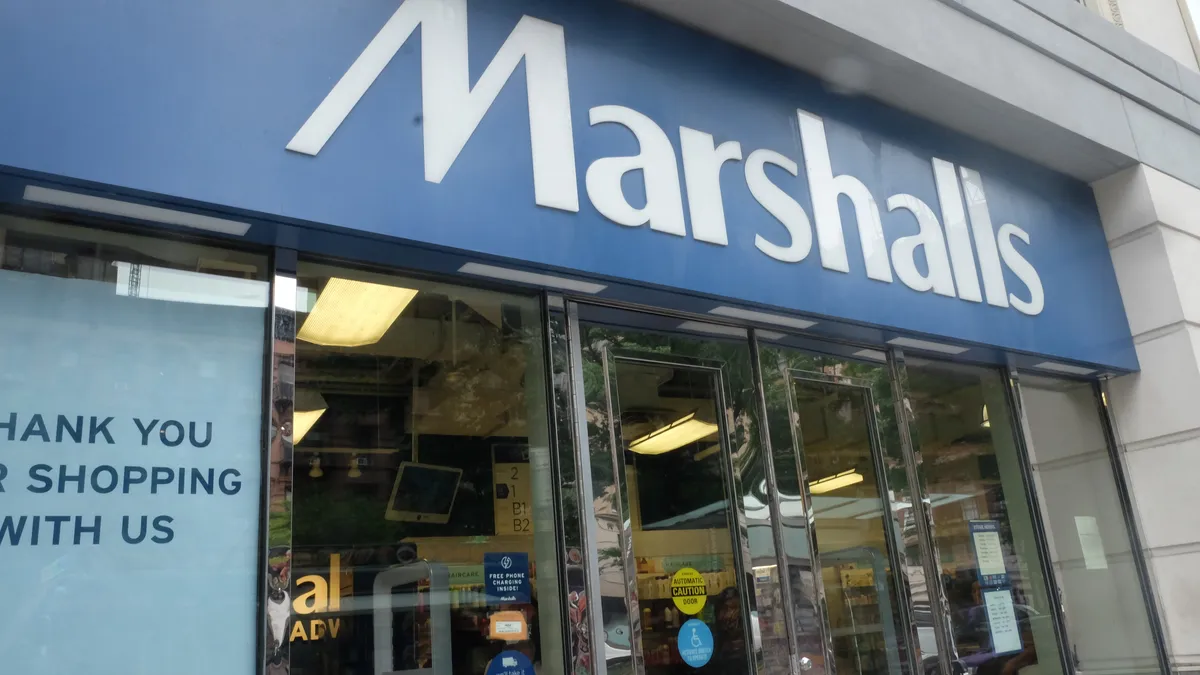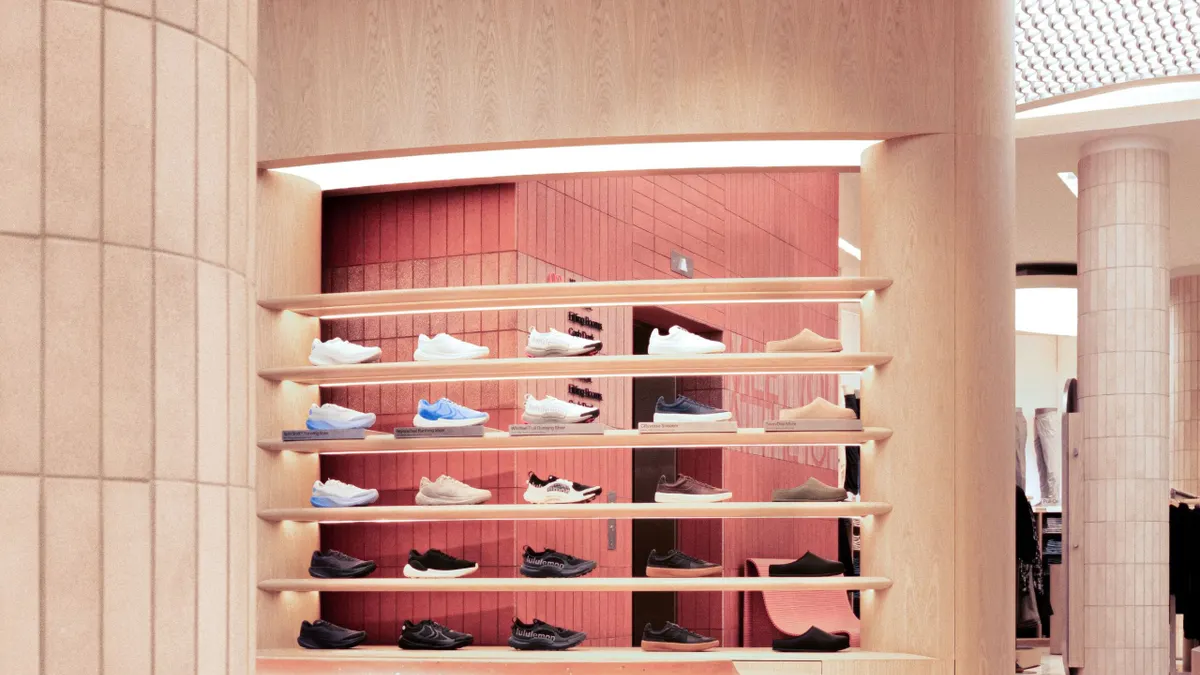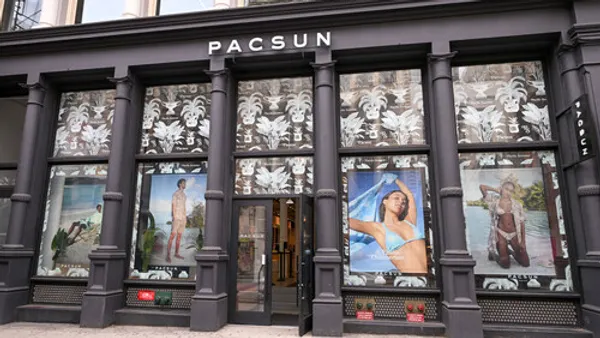Off-price stores tend to thrive even when external forces are pressuring other retailers because they appeal to consumers regardless if the economy is up or down. The pandemic, however, has been another story.
The three major off-price companies — Burlington, Ross and TJX — run little to no e-commerce, so last year's public health-mandated brick-and-mortar lockdowns took an especially big toll. And while in the last 18 months home goods have been a bright spot for any retailer that sells them, apparel sales — the bulk of the off-price business — were plummeting until recently as people hunkered down, with little need to dress up.
That's now changed, though pressures remain. People are refreshing their closets as they return to work and events, and with stores open again, retail sales are on the rebound. The off-price players are participating in that, but they're not immune to the headwinds the industry is facing lately, either. Those include rising freight costs, constrained supply and choppy demand, along with rising uncertainty about the status of the pandemic due to the delta variant of the virus.
Here's how the second quarter went for off-price retail.
Burlington
Despite robust sales and margin gains in the second quarter, Burlington CEO Michael O'Sullivan told analysts that the retailer is being conservative about the near term, due to uncertainty around the resurging pandemic and a supply chain situation that he said is "getting much worse."
There is "unprecedented volatility and disruption in deliveries of merchandise across all sectors of retail and it has caused a significant spike in international and domestic freight rates," O'Sullivan said, according to a Seeking Alpha transcript.
"Given the uncertainty surrounding the pace of the recovery of consumer demand and the ongoing COVID-19 pandemic, the Company is not providing sales or earnings guidance for Fiscal 2021," the company stated in a press release.
Comparable store inventories fell 7%, offset by inventory from the addition of 101 net new stores that Burlington opened since the end of the second quarter of fiscal 2019, the company said. Total sales in the second quarter rose 34% from 2019 to $2.2 billion, while comparable store sales rose 19% in that period. Gross margin expanded by 80 basis points over 2019 to 42.2%, according to the company press release. Net income rose 21% from 2019 to $103 million.
Analysts were surprised by the glum outlook, and even by lower-than-expected sales and margins. But Wells Fargo analysts believe that Burlington "should thrive" in the long term, despite near-term worries regarding supply costs and the uncertainties in retail. In fact, the Wells Fargo team led by Ike Boruchow believe that Burlington will ultimately benefit from other retailers' woes, as it has in the past.
"The unexpected events of 2020 have driven many retailer bankruptcies and thus, severe inventory dislocations," Wells Fargo said in emailed comments. "The last time a similar dynamic occurred was back in 2008, which was followed by a decade of off-price share gains and stable [Burlington] performance. If history repeats itself, [the company] should be well positioned to take advantage of the new, premium supply of brands entering the market in 2020, given its off-price business model, which could drive further market share gains and push margins to alltime highs for the company."
Ross
As at other retailers during the second quarter, lean inventory at Ross Stores prevented many markdowns and bolstered margins. At quarter-end, inventories were down 5% while average selling store inventories were up 3% versus 2019, CEO Barbara Rentler told analysts, according to a transcript from Seeking Alpha.
Sales rose 21% in the period to $4.8 billion, with comparable store sales up 15%, according to a company press release. Net income rose nearly 20% to $494 million, the company said.
The pandemic hasn't dissuaded Ross from expanding its store fleet. Rentler reiterated that the retailer is back to its pre-pandemic plans to open about 100 new stores each year, on the path to 3,000. In the current quarter, plans are to open 28 stores, including 18 Ross and 10 DD's Discount locations, Chief Operating Officer Michael Hartshorn said on the call. But the retailer is reining in some expectations.
"Looking ahead, there remains much uncertainty on the sustainability of the positive external factors that benefited our first-half results, as well as the potential risks we could face from the spread of COVID variants and worsening industry-wide supply chain congestion," Hartshorn said.
Wedbush analysts led by Jen Redding called it a "solid" quarter.
"Overall, we see plenty of inventory supply, but merchandise deliveries are sliding given pent-up-demand, among consumers flush with stimulus cash, and supply chain congestion," the analysts said in emailed comments. "Leaner inventories allowed for the ability to chase merchandise and sales trends for higher merchandise margins during the pandemic-driven consumer recovery."
TJX Cos.
TJX Cos, which includes the T.J. Maxx, Marshalls, HomeGoods, Sierra, and Homesense banners, is mostly upbeat about the future despite ballooning freight costs.
In the second quarter, the company's net sales rose 23% year over year to $12.1 billion, as store comps (at locations that were open) rose 20%. Total segment profit grew by 29% from the same period in 2019, or $336 million, to $1.5 billion, according to a company press release. Year over year at Marmaxx, which includes just T.J. Maxx and Marshalls, open-only comps rose an 18% and profits rose were up 19%, CFO Scott Goldenberg told analysts, according to a Seeking Alpha conference call transcript.
But Goldenberg also warned that the pandemic could interfere with its trajectory. "While we're not planning for overall store closures in the third quarter to be significant, sales could also be negatively impacted if new COVID-related regulations are put in place," Goldenberg said, adding that means the company isn't ready to provide guidance for the third quarter or the second half of the year.
The company is unusual in off-price in its e-commerce ambitions (Nordstrom's Rack division has long sold online, but TJX's main rivals eschew it.) TJX is launching HomeGoods e-commerce in the third quarter, an area where the company sees as ripe for picking up market share, CEO Ernie Herrman said on the call.
In fact, the supply chain issues that most retailers are dealing with right now could hold an upside for TJX despite its own challenges in that area, Herrman said.
"Again, the best thing for our business for the next couple of years is to continue to grab this outpaced market share pace — market share opportunity that we're on right now," Herrman said. "Here is the ironic thing. I believe the disruption in the supply chain is going to create a future buying opportunity for us."
Wells Fargo analysts see it that way, too, noting in emailed comments that TJX remains a standout not just in off price, but in retail in general.
"The concept is the most dominant and successful ... operator in the sector, and appears well-positioned to continue to benefit from the volatile inventory dynamics across the retail space," the analysts led by Ike Boruchow said. "With 13 buying offices globally, more than 18,000 vendors, and 100+ sourcing countries, we believe TJX has one of the most efficient, resilient, and effective models in specialty retail."























